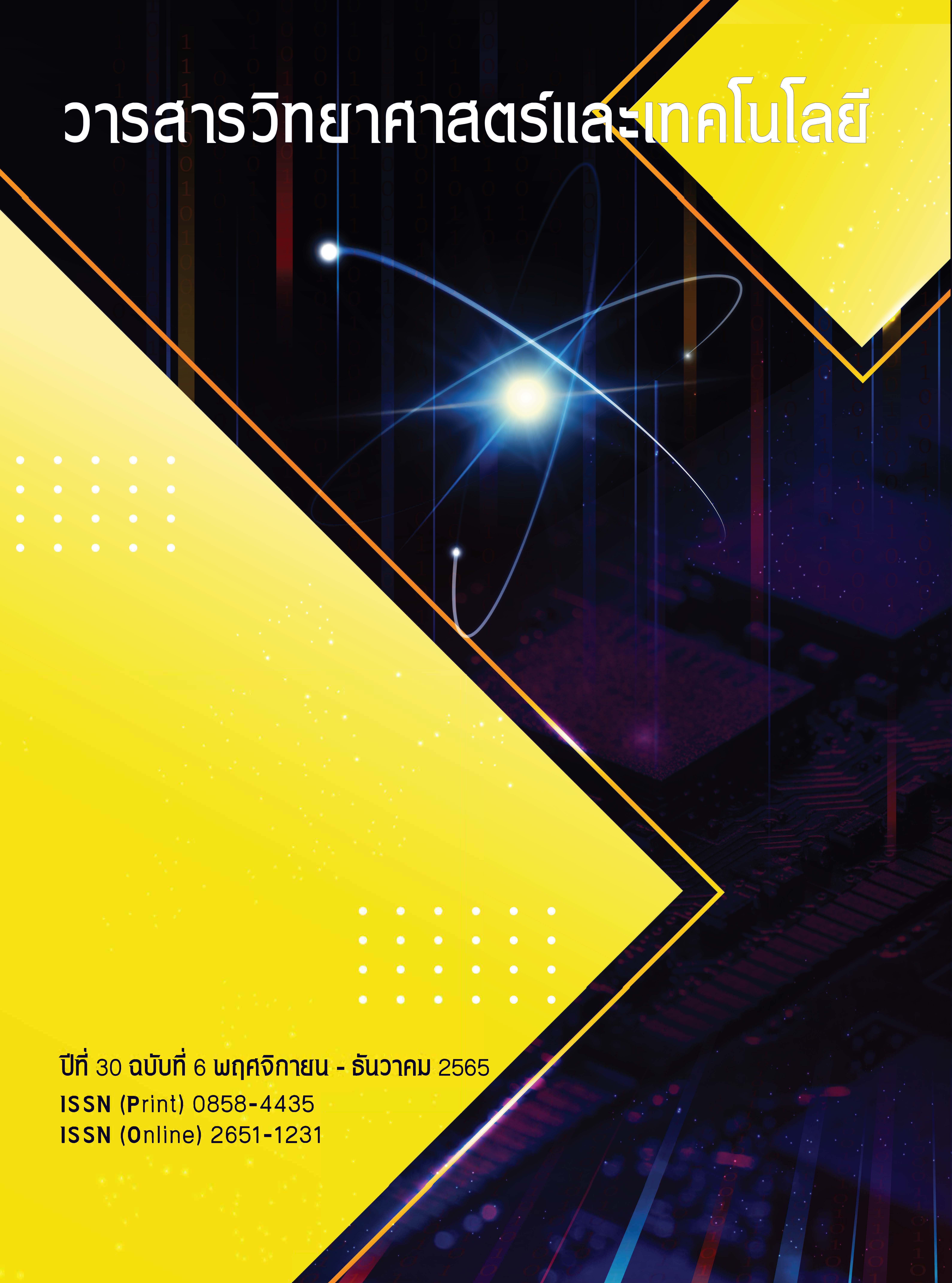The Latent Fingerprint Analysis by “VeriFinger 12.0” Software
Main Article Content
Abstract
Recently, fingerprint verification by experts combined with the automated fingerprint identification system (AFIS) became the standard method for fingerprint verification in Thailand. Office of Police Forensic Science has determined that the minutiae must match at least 10 points to confirm that the fingerprints belong to the same person. This study aims to assess the performance of the VeriFinger 12.0 software for detecting latent fingerprints with sufficient minutiae before sending it to the experts for verification by Mini AFIS. The study population consisted of 6 volunteers. The fingerprint samples were collected from all five fingers by stamping them on two materials, including smooth surface (glass) and rough surface (lacquered wood), and then collecting latent fingerprints with a dusting method. Then, the samples were analyzed with VeriFinger 12.0 and Mini AFIS software and calculated to compare the passive fingerprint verification performance with the standard method (Mini AFIS with experts). The results showed that VeriFinger 12.0 defined minutiae point matching the standard method accounting for 84.9 %, 15.1% of minutiae points that were not detected according to the standard method, and 49.4 % of minutiae were misconfigured or different from the traditional way. The correlation between VeriFinger 12.0 with experts versus the standard method and Mini AFIS, the Spearman correlation of % correct, % missed, and % false were 0.738 to 0.774, which were statistically significant (p<0.001). The results showed that VeriFinger 12.0 with experts versus the standard method and Mini AFIS provides coherent information. In conclusion, VeriFinger 12.0 software’s performance in latent fingerprint verification was similar to the standard method and Mini AFIS software.
Article Details
References
Singthong, S., 2015, Fingerprints and personal identification, Prae-wa Kalasin. 2(2):52-63. (in Thai)
Anukool, P., 2015, Detection of Latent Fingerprints on The Material in Fire Case by Small Particle Reagent (SPR), Master Thesis, Silpakorn University, Bangkok, 1 p. (in Thai)
Chamsuwanwong, A., Kulnides, N., Sukawaj, S., 2001, Forensic Science 2 for Criminal Investigation, 4th Ed., G.B.P. Center, Bangkok. (in Thai)
Singla, N., Kaur, M., Sofat, S., 2020, Automated latent fingerprint identification system: a review, Forensic Sci. Int.309.
Phantoung, S., 2003, Problem and Obstacle that may Affect the Process of Conducting the Identification of Fingerprint by AFIS, Master Thesis, ThammasatUniversity, Pathum Thani. (in Thai)
Maltoni, D., Maio, D., Jain, A.K., Prabhakar, S., 2009, Handbook of fingerprint recognition, 2nd Ed., Springer, London.
Moses, K.R., Higgins, P., McCabe, M., Prabhakar, S., Swann, S., 2011, Automated Fingerprint Identification System (AFIS), The fingerprint sourcebook, Department of Justice, Washington DC.
Pensawat, D., 2015, Comparison of Fingerprint Development on Papers Using 5 –Methylthioninhydrin, Ninhydrin and 1,2 –Indanedione, Master Thesis, Silpakorn University, Bangkok, 25-26 p. (in Thai)
Neurotechnology 2021, Verifinger SDK Fingerprint identification for stand-alone or client-server solution. Available Source: https://www.neurotechnology.com/verifinger.html, June 1, 2021.
Fieldhouse, S.J., 2015, An Investigation into the Effects of Force Applied During Deposition on Latent Fingermarks and Inked Fingerprints Using a Variable Force Fingerprint Sampler, J. Forensic Sci. 60:422-427.
Kasper, S.P., 2015, Latent Print Processing Guide, 1st Ed., Elsevier Science, United States of America, 21 p.
Darlow, L.K., Rosman, B., Fingerprint Minutiae Extraction using Deep Learning. In: A 2017 IEEE International Joint Conference on Biometrics (IJCB); 2017 Oct 1-4; Denver, CO. IEEE; 2017. p. 22-30.
Hinkle, D.E., William ,W., Stephen G.J.,1998, Applied Statistics for the Behavior Sciences, 4th ed., Houghton Mifflin, New York, 118 p.


